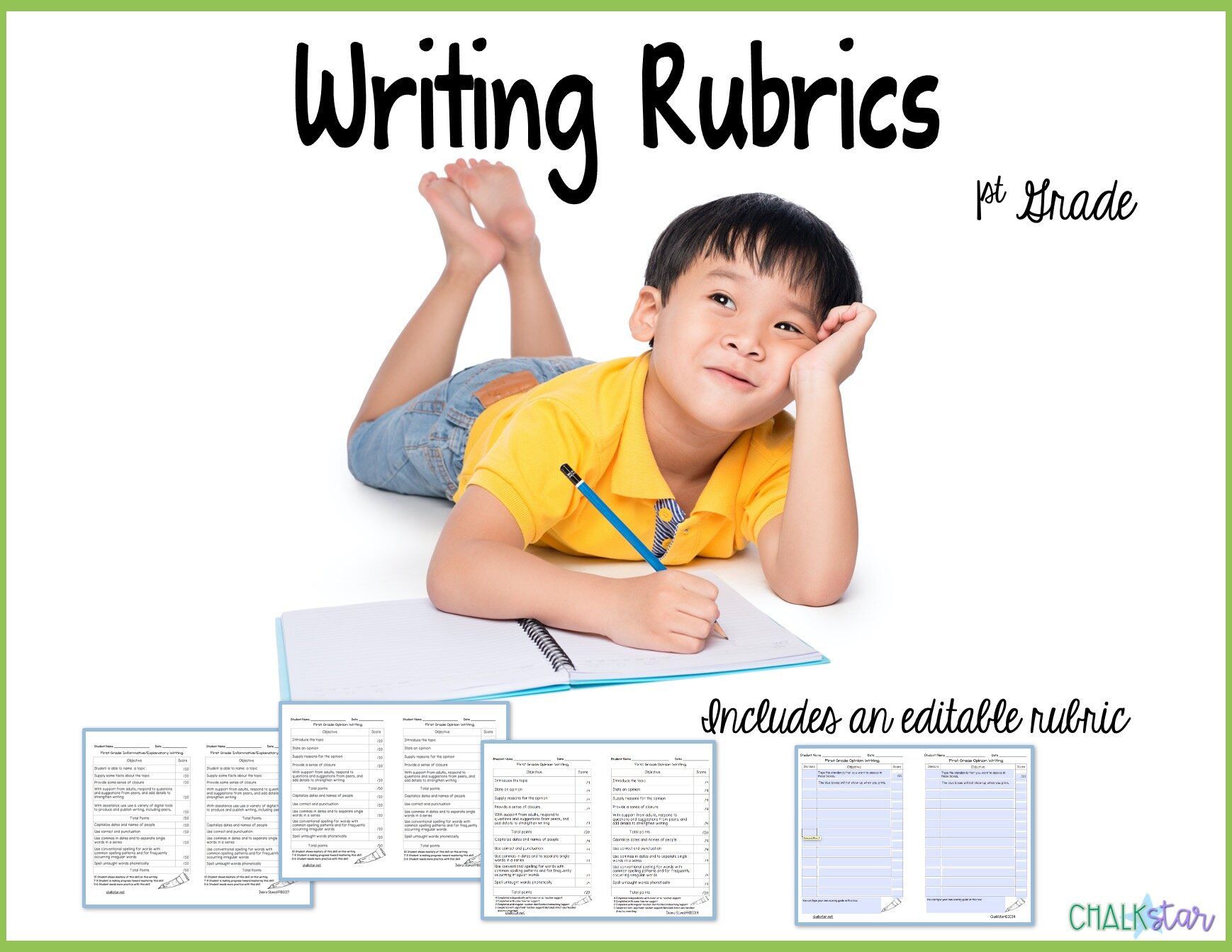Grading writing was one of my least favorite parts of teaching. Sure, I could go through a student’s writing and pick apart the errors, but that did not help me put a grade in the grade book. It also didn’t help my students become self sufficient writers. So, I asked to Professor Google. I searched and found many different writing rubrics. I tried them, but none were exactly what I needed. They were vague and not student friendly. Additionally, using them to get a percentage grade required nothing short of algebra. I know who can relate if you have ever used some of those rubrics.
Out of this frustration, my writing rubrics were born. I designed the rubrics to guide my students into being autonomous, independent, learners. My goal is to shift the responsibility of evaluating writing from the teacher to the student. From the layout to the verbiage, everything is clear for students and parents. My rubrics are teacher friendly, student friendly, and parent friendly.
Since writing is the application of many language standards, my rubrics contain both writing and language standards. This provides for grading clarity and accountability. It also shows students the application of language skills that may be taught in isolation.
The rubrics have student friendly language. It is important that students can understand and know what was being evaluated on each piece of writing. I included vocabulary students need to know such as introduction and closing. These terms will follow them from grade to grade.
The numbered scale helps students and parents see progress toward mastery of skills and helps you assign a percentage grade to the writing. The number you record for each standard will increase as students become proficient with the standards. By converting the scores to percentages, recording a grade for each standard becomes a piece of cake.
We all know that students’ writing skills ebb and flow. One week they use conventions correctly, then the week they are focusing on another part of the writing and the conventions slip. It is normal and natural for students to do this. Because of this ebb and flow, I was always hesitant to declare a student had mastery of a standard on previous rubrics. I fixed this problem on my rubrics with a few words. When a student earns a perfect score on a standard, the scale does not say that the student has mastered the standard. It says that they have mastered the standard on this piece of writing. With that little quantifier, I felt completely comfortable indicating that the student has demonstrated mastery on any standard. Those 3 words made a world of difference.
The biggest question I am asked is how do you know what number each student has earned for a standard. Basically how do you decide the what warrants a 3 or a 7, if you are using the 10-point scale? This is a site-based decision. Work with teachers in your grade level as well as teachers above and below your grade level for guidance on what they do.
We use approximate percentages. I studied nationally normed anchor papers for all grade levels. Through my analysis, I found that using approximate percentages fit the norm. For writings from single sentences to two paragraphs, determine the error ratio. For example, when evaluating the correct use of end marks, count how many sentences the student wrote and compare that number to number of end mark errors. If they wrote 9 sentences and used end marks correctly 7 times, they earned a 7 out of 10.
For multiple paragraph writing, we use an error count method. If a student has no errors for a standard, they receive a ten. One – two errors for a standard is a score of nine. Three or four errors is an 8, and so on. You can adjust this scale based upon the student population you teach and the complexity of the writing assignment.
When I grade the writing, I read it multiple times. Each time I focus on one standard at a time. First, read the student work through one time completely to get an understanding of the writing. Then, read it again looking at just the writing standards. Give the student a number grade based upon their skill of sticking to the topic. Read it again and focus on the introduction, etc. Continue rereading for each standard.
Next, your reads will focus on the organization. Evaluate the sequencing, temporal words, and closure and give a number grade for each.
By this time you’ll have read the paper a lot. You will probably be able skim the paper for language. Using the same process above, skim once for capital letters, once for punctuation, and once for spelling, etc. When finished, staple the rubric to the writing and record the grades.
I hope this information and my writing rubrics make your life easier. Feel free to email me with questions or comment below. Thanks and Happy assessing!
The 5 star reviews are in
Great Resource! Thank you!
Michelle L. June 30, 2020
Great for students and teachers!
Anna S. June 23, 2020
Very comprehensive rubric. Makes grading very clear cut.
Kimberly M. February 6, 2020
Excellent resource! This saved me so much time! Thank you!
Sarah B. January 13, 2019
Love the self-populating portion of the forms! That's for the time-saver.
Shayla S. November 16, 2019
Makes grading so much easier and student's needs are more identifiable.
Marisa P. November 11, 2019
Thank you for making such an easy to use product. I love that I can edit to fit any assignment!
Julie F. August 31, 2019
Great resource, and I love that you can tailor them to individual learners.
Cheryl S. October 22, 2018
I love this grading rubric for writing. It's on point and aligned to the common standards. I also love the language grading portion too. The only suggestion I have is, it would be nice to edit the title on blank rubric forms.
Heidi B. October 9, 2018
This is just what we were looking for! Love that it has an editable page!!
Angela Parrish Miller September 29, 2018
Excellent resource. Much more student friendly than the one offered by the state. I liked how it was editable as well.
Dorie C. July 21, 2018
Total time saver!!! I print out two copies, one to hand out before the unit and one at the end with their grades.
Elena D. April 8, 2018
These are great! They make my life so much easier. What sold me on these rubric over others was the student friendly language. My students will now know exactly what is expected of them and there will be no questioning their grades!
Lacey R. November 29, 2016










